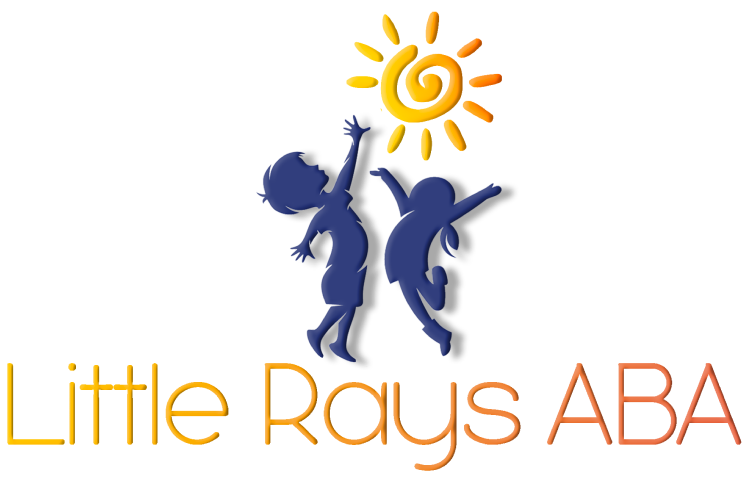If you’ve done any research on ABA therapy, you’ve likely come across some strong opinions. Some say it’s outdated, others claim it’s about forcing compliance. But here’s the truth: ABA therapy today is about empowerment, independence, and improving quality of life.
I’ve seen firsthand how it transforms families—like one father who was skeptical but now swears by it. Let’s clear up the confusion.
Is ABA Therapy Only for Autism?
The Misconception: ABA is Exclusively for Individuals with Autism
Many people assume ABA therapy is only for children with autism, and while it’s true that ABA has been incredibly beneficial in helping autistic individuals, that’s not where it stops.
The Reality: ABA Can Benefit a Wide Range of People
ABA therapy is rooted in the science of learning and behavior. That means it can be applied to a variety of situations and populations—not just autism. In fact, ABA principles have been used successfully for:
✔️
Individuals with
ADHD who struggle with executive functioning and impulsivity
✔️
People with developmental disabilities who need support with communication and daily living skills
✔️
Students in schools who need behavioral support to improve classroom participation
✔️
Adults in workplaces looking to improve productivity and social skills
✔️
Athletes and professionals who use behavior modification to improve performance
So, while ABA is commonly associated with autism, it’s a powerful tool that can help anyone who wants to learn new skills, improve behaviors, or develop independence.
Does ABA Therapy Force Compliance?
The Misconception: ABA is Just About Making Kids Follow Commands
There’s a belief that ABA therapy is all about strict compliance—teaching kids to sit still, obey commands, and act in a certain way. Some critics even argue that ABA is designed to make autistic individuals “fit in” rather than celebrating their differences.
The Reality: ABA is About Encouraging Independence
The truth is, modern ABA therapy isn’t about forcing compliance—it’s about teaching skills that improve a person’s quality of life. Therapists work closely with individuals to identify their personal goals and help them build the skills needed to achieve them.
For example, instead of just teaching a child to sit still in a classroom, an ABA therapist would:
✔️ Identify
why they struggle with sitting still (Is it
sensory overload? Anxiety? A lack of interest in the lesson?)
✔️ Use positive reinforcement to
help them develop coping strategies that make sitting still easier
✔️ Adapt the environment to
support their needs, rather than just forcing them to "comply"
Rather than making individuals conform, ABA empowers them to navigate the world on their own terms—with confidence and independence.
Does ABA Create “Robotic” Behavior?
The Misconception: ABA Turns Kids Into Robots
Some people worry that ABA therapy creates scripted, robotic behavior—that children only learn to repeat memorized phrases rather than truly engaging in meaningful interactions.
The Reality: ABA Helps Develop Authentic Communication
In older versions of ABA, some programs focused too much on repetition, which may have made behaviors seem robotic. However, modern ABA is all about natural learning and meaningful interactions.
Instead of teaching a child to say "hello" on command, ABA therapists:
✔️
Teach the purpose of greetings—why we say hello and when it’s appropriate
✔️
Use real-world scenarios so greetings feel natural, not scripted
✔️
Respect individual preferences—some kids may wave instead of speaking, and that’s okay!
ABA is not about forcing kids to act a certain way—it’s about helping them communicate in a way that feels natural and comfortable to them.
Does ABA Use Punishment?
The Misconception: ABA Relies on Harsh Discipline
Because early behavior therapy sometimes used aversive techniques (like scolding or withholding rewards), some people assume that ABA therapy today still uses punishment to control behavior.
The Reality: Modern ABA is Built on Positive Reinforcement
Let’s be clear: Modern ABA therapy does NOT use punishment or aversive methods.
Instead, ABA focuses on positive reinforcement, meaning:
✔️
When a person successfully uses a new skill, they’re rewarded with something meaningful to them (praise, a favorite activity, a small treat, etc.)
✔️
When a person struggles with a skill, therapists adjust their approach to make it easier and more engaging
Punishment is not part of ethical ABA therapy. The goal is always to build confidence, not fear.
Is ABA One-Size-Fits-All?
The Misconception: ABA is a Rigid, Cookie-Cutter Program
Some critics believe ABA therapy follows a strict, one-size-fits-all curriculum that doesn’t consider individual needs or preferences.
The Reality: Every ABA Program is Personalized
ABA is actually highly individualized. Before therapy even begins, behavior analysts:
✔️
Conduct in-depth assessments to understand the individual’s strengths, challenges, and goals
✔️
Develop a custom treatment plan tailored to their needs, interests, and family dynamics
✔️
Regularly update strategies based on progress, preferences, and changing circumstances
No two ABA programs look the same—because no two individuals are the same.
Conclusion
ABA therapy has come a long way, and modern ABA is designed to be respectful, empowering, and life-changing. Unfortunately, outdated misconceptions still cause some families to hesitate when considering therapy.
The truth is:
- ABA is not just for autism—it can help a wide range of individuals
- ABA is not about compliance—it focuses on independence and personal growth
- ABA does not create robotic behavior—it fosters authentic communication
- ABA does not use punishment—it’s built on positive reinforcement
- ABA is not one-size-fits-all—it’s fully customized to each individual’s needs
If you’re considering ABA therapy for your child, the best thing you can do is research providers, ask about their approach, and choose a therapist who aligns with your values. ABA, when done right, can be one of the most powerful tools to help individuals thrive.
At Little Rays ABA, we offer compassionate, evidence-based therapy that focuses on empowering children—not forcing compliance. Contact us today for a free consultation and discover how ABA therapy can help your child thrive!
FAQs
Is ABA therapy only for kids with autism?
No. While ABA is widely used for autistic individuals, it can also benefit people with ADHD, developmental disabilities, behavioral challenges, and even neurotypical individuals looking to improve certain skills.
Does ABA therapy force kids to behave a certain way?
Not at all. ABA therapy is about helping individuals build skills that allow them to navigate life with confidence. It teaches, not forces.
Is ABA therapy outdated?
Older versions of ABA had flaws, but modern ABA is ethical, personalized, and focused on empowerment. The field has evolved significantly.
Sources:
- https://gsep.pepperdine.edu/blog/posts/debunking-7-common-myths-about-aba-therapy.htm
- https://www.kennedykrieger.org/stories/linking-research-classrooms-blog/myths-facts-about-applied-behavior-analysis
- https://www.cabrillo.edu/psychology/autism-controversies/
- https://www.autismspeaks.org/aba-and-other-therapies
- https://www.appliedbehavioranalysisedu.org/2023/12/future-of-applied-behavior-analysis-aba-new-research-areas-and-findings/
Unlock Your Child's Potential with Expert ABA Therapy!
At Little Rays ABA, we provide compassionate, evidence-based ABA therapy to help children with autism thrive. Our personalized approach fosters growth in communication, social skills, and independence.
Get In Touch With Us Today to Get Started With ABA Therapy!
Related Posts
MENU
GET IN TOUCH
7117 San Salvador Dr Boca Raton, FL 33433
3200 Collins Ave Miami Beach, FL 33140





